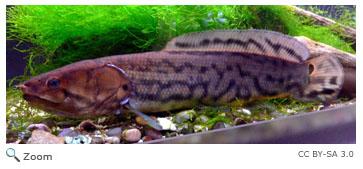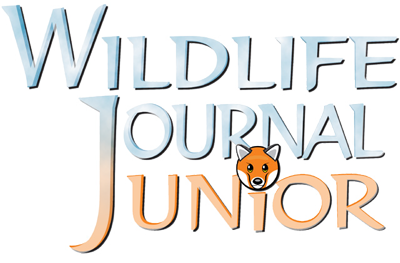 There is one family, Amiidae, in this order and only one species is alive today. There is one family, Amiidae, in this order and only one species is alive today.
Bowfins are found in slow moving waters in North America east of the Mississippi River. This is a primitive freshwater fish that hasn't changed much in millions of years!
The bowfin has a long, cylindrical body with a very long dorsal fin that runs from the middle of its back down to the base of its tail. It may also have a round black spot on its tail. It has a rounded, single lobed caudal fin and small, rounded pectoral fins.
The bowfin sometimes sticks its head out of the water to gulp in air if the oxygen level in the water is too low. Bowfin eat fish and invertebrates.
World Status Key
 Least Concern Least Concern  Near Threatened Near Threatened  Vulnerable Vulnerable  Endangered Endangered  Critically Endangered Critically Endangered  Extinct in Wild Extinct in Wild  Extinct Extinct  Not Enough Data Not Enough Data
Status and range is taken from ICUN Redlist.
U.S. Status Key
 Threatened in US Threatened in US  Endangered in US Endangered in US  Introduced Introduced
Status taken from US Fish and Wildlife. Click on U.S. status icon to go to the U.S. Fish and Wildlife species profile.
New Hampshire Status Key
 Threatened in NH Threatened in NH  Endangered in NH Endangered in NH  Breeds in NH (birds) Breeds in NH (birds)
Status taken from NH Fish and Game
Location Key
 Africa Africa  Asia Asia  Australia/Oceania Australia/Oceania  Europe Europe  North America North America  South America South America  NH NH
More Info
 Click for More Info Click for More Info  Click for Image Click for Image
Resource Key
 Profile Profile  Photos Photos  Video Video  Audio Audio
New Hampshire Species
None
North/Central American Species
Bowfin - Amia calva   
Other Species Around the World
None
Additional Information
Bowfin - Amia calva    
Bowfin live in backwater pools of rivers, lakes, and swamps.
Source: Animal Diversity Web Intended Audience: General Reading Level: Middle School
Bowfin - Amia calva    
The bowfin's dorsal fin runs the entire length of its body.
Source: Florida Museum of Natural History Intended Audience: General Reading Level: Middle School
|

